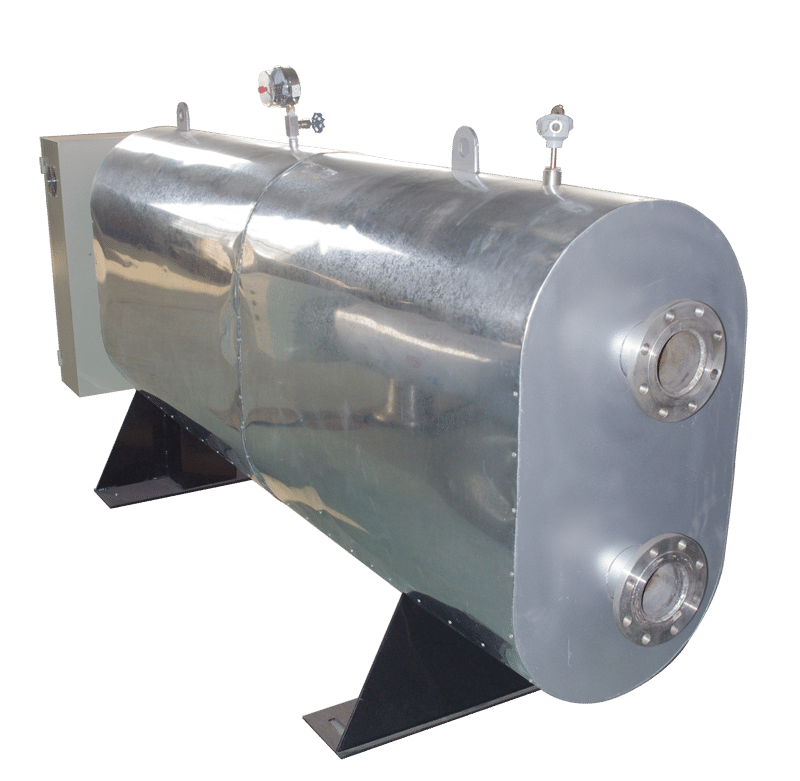As an efficient and energy-saving heating equipment, pipeline electric heater is widely used in many fields such as petroleum, chemical, food processing, liquid heating and so on. It provides stable and continuous heating effect by converting electric energy into heat energy. So, how does the pipeline electric heater work? Next we will analyse its working principle and main features in detail.
1. Basic working principle
The basic working principle of pipeline electric heater is to use the electric current through the heating element to generate heat, and transfer the heat to the liquid or gas flowing through the pipeline through the way of heat conduction. The specific process is as follows:
- An electric current is passed through an electric heating element (usually a resistance wire made of metal or alloy) inside a duct heater, and the resistance wire generates heat as a result of the current flow.
- The heat is transferred through the electric heating element to the surrounding metal casing, through which the heat is then transferred to the medium (e.g. water, oil, gas, etc.) inside the pipe.
- During the heating process, the medium in the pipe will gradually warm up until it reaches the preset temperature. At this time, the electric heater adjusts the heating power according to the feedback from the temperature control system to maintain a stable working condition.
2. Selection of heating elements
The heating element of an electric pipe heater is crucial. Common heating elements are made of stainless steel, nickel-chromium alloy and other materials, with high resistance and high temperature performance. Different materials of the heating element can be adapted to different temperature requirements of the working environment, to ensure stable and reliable heating effect.
3. The role of temperature control systems
Pipeline electric heaters are generally equipped with a temperature control system, through the temperature sensor real-time monitoring of the temperature of the medium in the pipeline, and according to the set temperature range automatically adjust the heating power of the electric heater. The temperature control system can accurately control the heating process, to avoid overheating or underheating occurs, to ensure the safety and stability of the entire heating process.
4. Specific steps in the workflow
The workflow of duct electric heaters is usually as follows:
- Starting the heater: Firstly, the duct electric heater is activated by the power supply and the current is allowed to pass through the heating elements.
- heat transfer: The heat generated by the heating elements is transferred through the housing to the medium flowing in the pipe. Over time, the temperature of the medium inside the pipe gradually increases.
- temperature control: The temperature control system monitors the medium temperature and automatically adjusts the heating power according to the actual temperature to ensure the stability of the temperature during the heating process.
- End of heating: When the medium in the pipeline reaches the preset temperature, the electric heater will stop heating and keep the set temperature stable.
5. Areas of application
Electric pipeline heaters are widely used in industries where precise temperature control is required, especially in liquid or gas heating processes. Example:
- Oil and gas industry: Used for heating liquids in oil and gas pipelines to prevent oil and gas from solidifying or waxing at low temperatures.
- Chemical industry: For heating of fluids in pipelines during chemical reactions to ensure stable reaction temperatures.
- Food industry: To heat the liquid in the conveying pipework during the food production process and to maintain the hygiene and temperature of the food.
- Heating system: For heating piped hot water systems in domestic or industrial heating.
The electric pipe heater generates heat in the heating element by means of electric current and transfers the heat to the medium in the pipe through the shell, thus realising an efficient heating process. Its unique temperature control system can accurately adjust the heating temperature to ensure the safety and stability of the heating process. Pipeline electric heaters are widely used in many industries such as petroleum, chemical, food, etc., and are one of the indispensable equipments in modern industrial production.
Our company can non-standard custom products, click the menu bar to contact us to customise, you can also refer to the first!product pageAppreciate our company's products oh!
Recommended Reading:
Applicable Scenarios and Advantages of Pipe Heaters - Jiangsu Ruiyuan Heating Equipment Technology Co.
